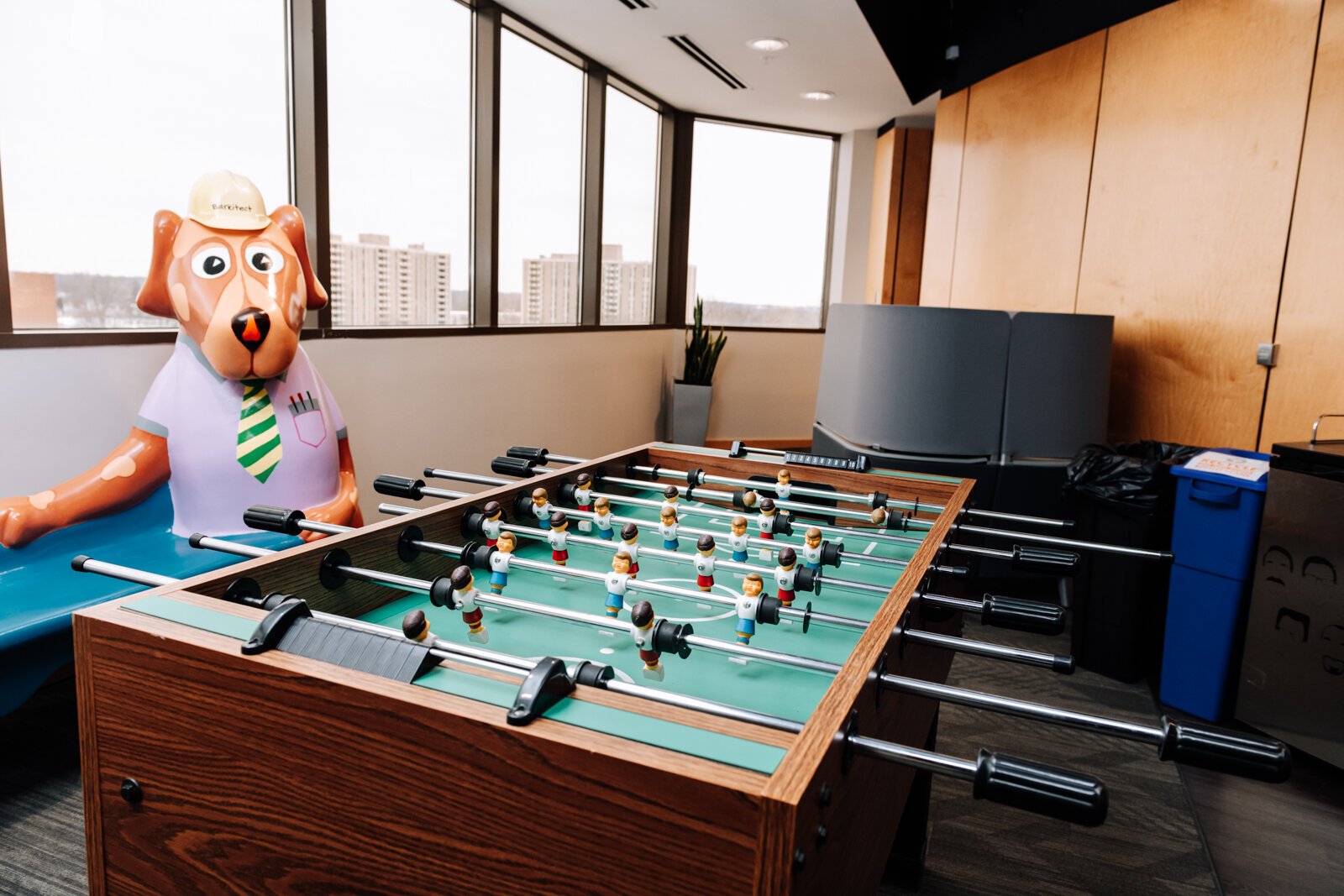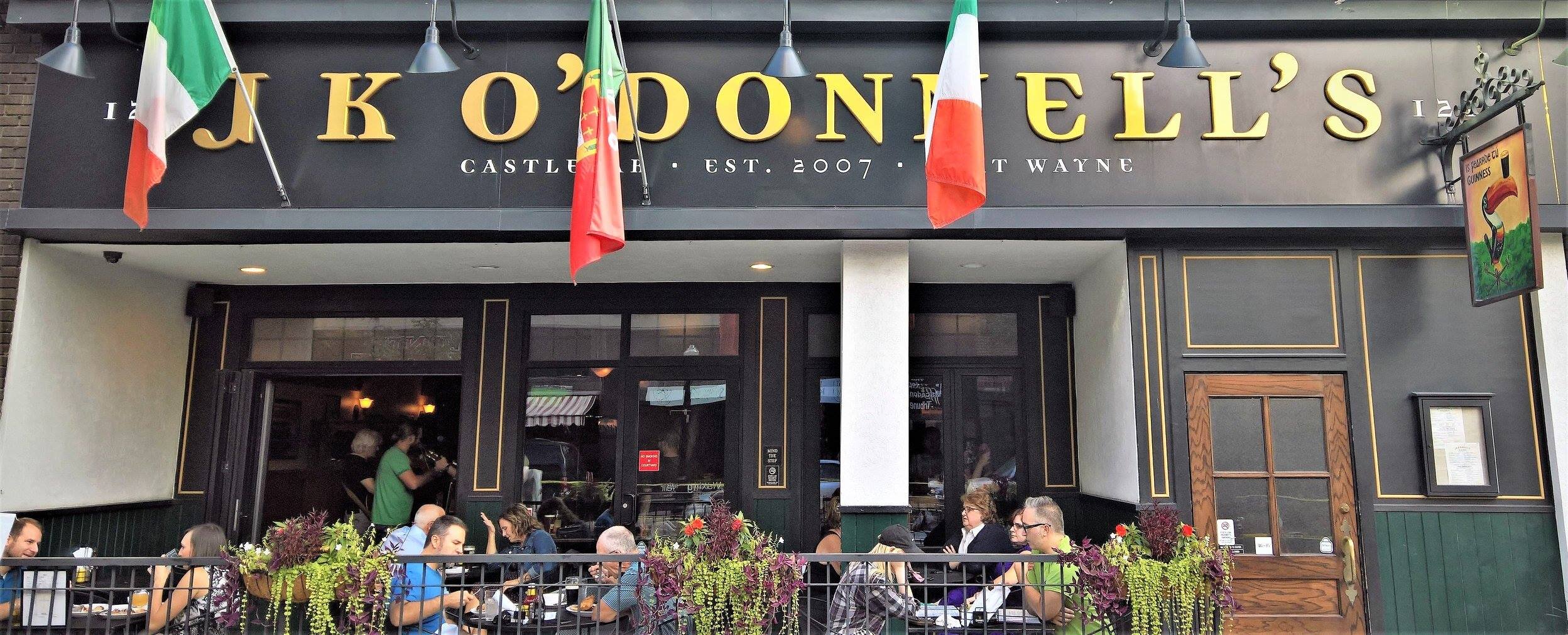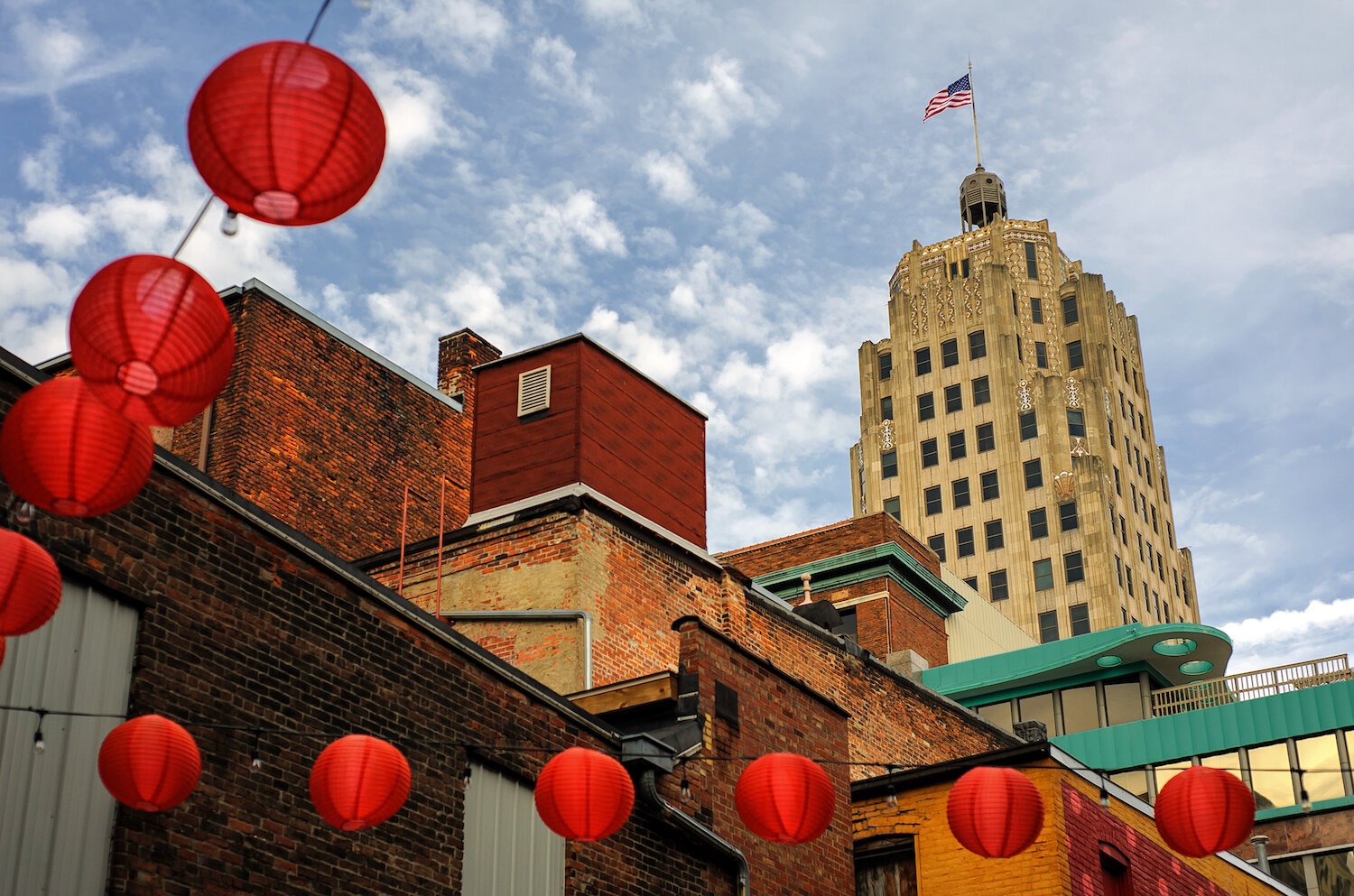Hybrid work: What is it? Where is it happening in Fort Wayne, & how does it affect business culture?
A hybrid or flex model of work is emerging as the “new normal,” and it's changing how people interact with their offices—and their cities.
As a writer at an ad agency in Northeast Indiana, Bailey Gerber often felt intimidated by the thought of spending an entire week cooped up in her office’s open-concept floor plan.
“When you work for a creative company, you’re often working with a lot of big personalities in open, collaborative spaces,” Gerber says. “People like me who are on the quieter side, or who have more social anxiety, often struggle to thrive in those environments.”
Even before the pandemic, Gerber’s former boss put her on a hybrid work model, where she worked two or three days remotely so she could focus on her writing and recharge. With access to quieter spaces and the flexibility to do her work on her own time, Gerber found herself able to “tap into her creative side” in new ways.
And when she was back in the office? She enjoyed it and felt ready to interact.
“It’s something I actually looked forward to,” Gerber says.

Today, she has a new job, but her interest in hybrid work, or working one to three days in the office as opposed to the traditional American five, hasn’t wavered. As a Content Creator in the marketing department for Indiana Wesleyan University-National & Global, she is technically fully remote. But she still finds it beneficial to work in the office one or two days each week, so she can collaborate with her coworkers.
“I can get my questions answered, and our team gets to interact,” Gerber says. “And since I’m not with them every single day, it’s a treat to see them.”

As the world emerges from the remote-by-necessity environment of the COVID-19 pandemic, a hybrid or flex model of work, which typically allows for two or three days of remote work per week, is emerging as the “new normal” nationwide. “Hybrid is the future of work” is the title of a June 2021 study published in the Stanford Institute for Economic Policy Research (SIEPR), which notes that about 70 percent of firms, ranging from small businesses to multinational corporations, like Apple, Google, Citi, and HSBC, plan to implement some form of hybrid work coming out of the pandemic.
While the concept of hybrid work naturally appeals to some, like Gerber, it’s demonstrated to benefit individuals and corporations alike. A study published in the February 2015 Quarterly Journal of Economics tracked 1,600 professional graduate employees for six months at a large multinational corporation and randomly assigned some to work from home two or three days a week. It found that a hybrid schedule not only increases employee performance, but also reduces sick days and increases retention rates.

Many Fort Wayne employees who have experienced hybrid work schedules are seeing these trends firsthand. Meghan Stevens works as a Talent Connection Manager in the Career Coaching and Employer Connections Office at Ivy Tech. During the pandemic, her department of about 10 employees converted to a hybrid work model where each employee is allowed self-select two days per week to work from home, and then everyone is required to meet in the office on Wednesdays.
In her opinion, it’s going well so far.
“I think the hybrid or flex model is the future of work,” Stevens says. “The pandemic has shown us that we can do it, and a lot of people really enjoy it. I think companies will have to start adapting now, especially since the labor market is so tight, and employees really have the upper hand.”

Even so, as the 2021 study notes, employees vary widely in how often they prefer to work remotely, ranging from those preferring all remote work (31.7 percent), to those preferring no remote work (20.8 percent), and the remaining 47.5 percent preferring a hybrid blend.
Having fewer employees in the office at the same time not only affects a company’s productivity and schedules, but also its built environment and culture—both within the office and beyond.

Parkview Health is the region’s largest employer with more than 14,000 co-workers—approximately 9,400 clinical and 5,000 non-clinical. Before the pandemic, nearly all of these employees worked onsite, says Hallie Custer, Vice President of Human Resources at Parkview. But COVID-19 changed that.
“Today, more than 1,500 co-workers are working remotely or in a hybrid capacity,” Custer says. “We have many more co-workers who are technically classified as in-person, but have the flexibility to work remotely as needed.”

This shift toward hybrid and remote work has changed the way Parkview makes use of its Corporate Office in Fort Wayne. During the pandemic, part of the office has been converted into a clinic for COVID-19 vaccines, testing, and infusion treatments. Going forward, Custer says Parkview will continue to repurpose its space to meet the needs of the community.
“We are continuing to evaluate our needs and optimize our office locations as appropriate,” she says. “We are also in the process of creating several ‘hoteling’ spaces that will allow our remote or hybrid co-workers a place to work if they come to onsite meetings.”

Lauren Elliott, a Workplace Designer at Design Collaborative, knows Parkview isn’t alone in rethinking and repurposing its office during the pandemic. She’s part of a team helping many local and regional companies transition to office spaces better suited for hybrid and remote work.
“Before the pandemic, we offered options, like agile office concepts to clients, where each employee doesn’t have a dedicated workspace or cubical, but many of them were afraid to take that step,” Elliott says. “Then, toward the end of 2020, more clients started looking into it, and it’s been really fun to help people figure out how to make these spaces work. A lot of companies are realizing: We don’t need all of this space.”

Along with smaller office footprints to accommodate fewer workers at once, Elliott says hybrid work is inspiring companies to upgrade their technology for more remote meetings and to convert more of their “owned” space in the office into “shared” community hubs.
“More people are doing their heads down, focused work at home, and then coming into the office for more collaborative group or teamwork, so everyone doesn’t need to have that dedicated workspace in the office anymore,” Elliott says. “Instead, we’re designing more offices where you come in, and pick where you want to work for the day, whether its a private bench workspace or a more public communal setting.”

While open-concept offices can be intimidating to some, like Gerber, without the option for hybrid work, having access to remote work is changing how employees interact with these spaces—and causing some to question what they actually need out of an office in the first place.
As President of the Reusser web design agency, Nate Reusser says his 22-person team has made the switch to a coworking-like space in their Downtown Roanoke office, and the decision is as much about culture as it is about practicality. For the past 10 years, Reusser (the business) has earned national media attention for its early adoption of the four-day, 10-hour workweek, requiring employees to take Fridays off. During the pandemic, they’ve added hybrid work to the mix, but with some structure for team building and collaboration.
“Everyone is required to be in the office on Mondays and Thursdays, and then they can work remotely on Tuesdays and Wednesdays,” Nate says.
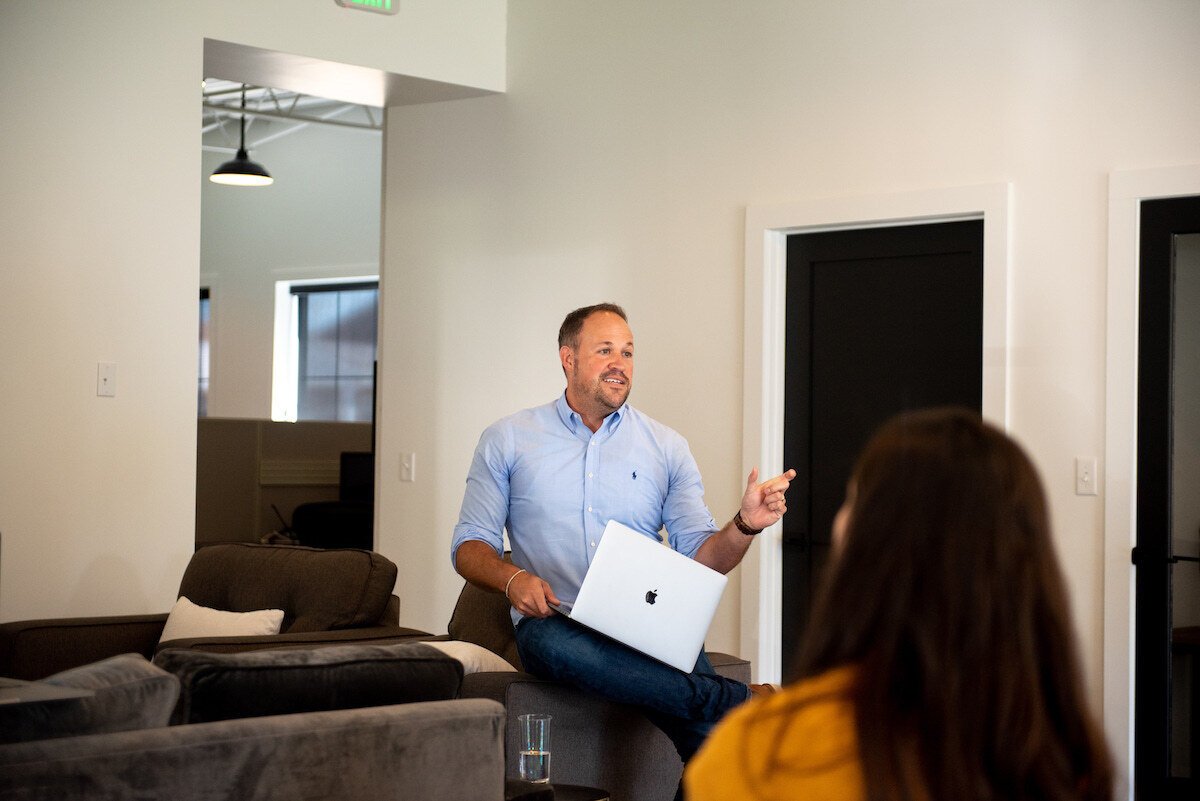
While he is already seeing an increase in employee satisfaction and a reduction of sick days, he notes that company culture is impacted. Rather than being together all of the time, his team now needs to carve out deliberate gatherings in the office, like Monday morning breakfast meetings.
“It can be harder to build relationships,” Nate says.

Still, he champions hybrid and remote work for the same reasons he initially implemented a four-day workweek: It shows employees their lives outside of work are valued, and it enables them to have a healthier work-life balance, which benefits business in the long run.
It was a similar line of thinking that inspired him to convert his company’s personal offices into a shared coworking-style space near the start of the pandemic.
“We stripped out all of the dedicated offices and removed all of the personalization, and told everyone: Come get your stuff,” Nate says. “Now, our office looks like a coworking space, and the rule is, you can’t sit at the same desk two days in a row, so it encourages people to mingle.”
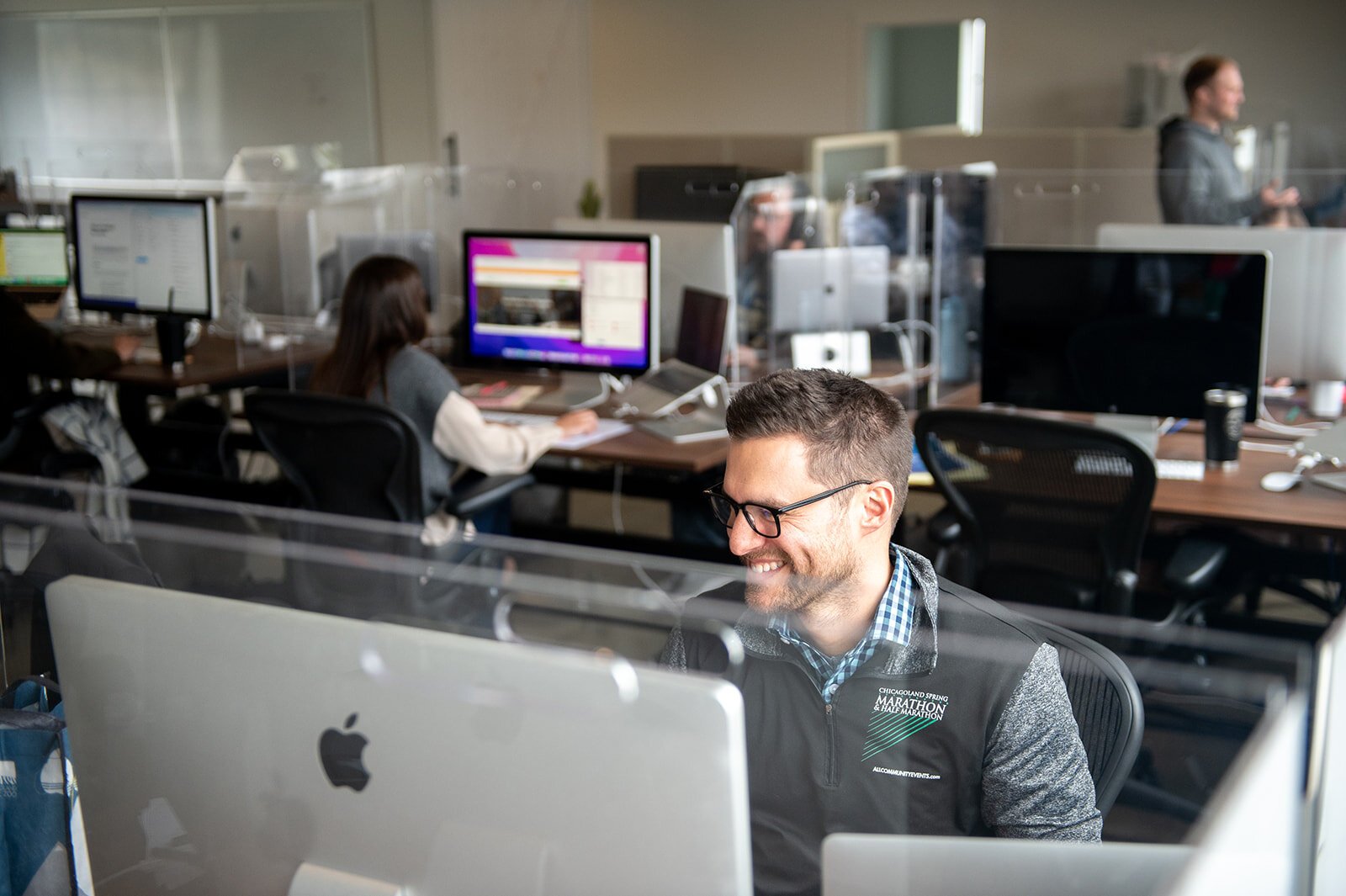
He believes removing personalization from the office, as well as people’s time, reduces how much they define—and confine—themselves by what they do.
“Work is not your home,” Nate says. “If you want to have a healthy work balance, we’re not going to make work feel like home.”

While hybrid work often raises concerns about “losing company culture,” it also poses questions about where and how people find “culture” in the first place. Whereas the traditional 9-to-5 work routine lends itself to finding community among one’s coworkers, clients, and business partners, a less rigid, more lifestyle-based hybrid work schedule might lend itself to finding community in other places—increasing emphasis on people’s personal lives, their relationships, hobbies, or neighborhoods.
This shift in social behavior—with less emphasis on “working” and more emphasis on “living” and “playing”—impacts a city’s culture and built environment, too.

Ownership at central Downtown hot spots, Fortezza Coffee and J.K. O’Donnell’s Irish Pub, both report steady business throughout the pandemic with more “new faces” showing up in recent months and a shift in the way Fort Wayne is socializing. Sean McCarthy, General Manager of JK O’Donnell’s, says his team has generally seen fewer business meetings during the day and more daytime social gatherings, particularly in the early evening hours, with less of a lingering late-night crowd, squeezing in their social bonding after a long day of work. Sean Wang, the Owner of Fortezza Coffee, reports a similar shift from daytime business meetings to daytime social gatherings instead.
“Before the pandemic, a lot of people scheduled work meetings here,” he says. “Now, we see more customers who are individuals and couples.”

Responding to this trend, Wang even adjusted Fortezza’s schedule, cutting back its hours throughout the week and opening on Sundays instead.
“Before the pandemic, we tried opening on Sundays in the summer for two seasons, and it didn’t work,” Wang says. “But during the pandemic, we thought, ‘Let’s try Sundays again,’ and now, Sundays have been good for us.”
Michael Galbraith and his team at the Downtown Improvement District have been analyzing foot traffic data Downtown dating back to 2017 using software called Placer.ai. Despite the pandemic shutdown, which virtually emptied some of Downtown’s largest corporate offices, they’ve seen rebounded foot traffic overall Downtown since 2021, when the annual number of “visitors,” or people going Downtown, nearly matched 2019’s pre-pandemic levels at 1.1 million.
As some Downtown offices, like Lincoln Financial, remain at a fraction of their pre-pandemic capacity due to remote work, the area’s ability to sustain foot traffic suggests people are coming Downtown for reasons beyond work. Galbraith believes Downtown’s emphasis on mixed-use and residential developments in addition to its retail and office spaces has strengthened its ability to rebound—and could aid Downtown in adapting to the emerging hybrid and remote work environment.

While hybrid work is hollowing out central business districts in cities, like Manhattan, in favor of neighborhoods, it may not have the same effect in the up-and-coming urban cores of smaller places, like Fort Wayne, where Downtown still offers many amenities lacking in people’s neighborhoods and its number of residents is growing.
“Cities that have concentrated on a residential strategy have fared better than those with just business districts,” Galbraith says. “Because we’ve had such a strong focus on improving Downtown’s residential appeal and increasing its residential capacity, it’s really helped to maintain the vibrancy. We have lots of people living here now, as well as those working here, and even if you don’t live in Downtown Fort Wayne, you can get here in about 15 minutes from most parts of the city.”

Trent Grable is one new face frequenting Downtown Fort Wayne in 2022. During the pandemic, he’s been transitioning out of his full-time on-site position in academia into a new hybrid work schedule for the tech consulting firm, Impact Upgrade, which offers fully remote work as well as the option to utilize the Paper Mill Workspace coworking above Utopian Coffee on the Landing.
Throughout the week, Grable splits his time between working Downtown and working from his house in Columbia City, where he and his wife, who also works part-time, are raising a family of four children.
He finds that having a hybrid schedule allows him to enjoy Downtown’s cool coffee shops and offers his family flexibility. But perhaps more fundamentally, it requires him and his employer to clearly define their work relationship and what is expected.
“I was told for years that I needed an office and a tie and meetings to be ‘working,’ but it turns out, I don’t need any of those things,” Grable says. “It begs the question: What do I actually need to get my job done?”















